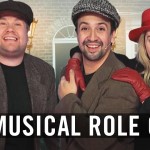There are four main types of characters in any story: the hero, the opponent, friends, and enemies. The most important character is the hero (or protagonist). They are the one we follow. There isn’t a story without the hero. Examples include Dorothy (Wizard of Oz), Frodo (Lord of the Rings), Luke (Star Wars), and Harry Potter.
The second important character is the opponent (antagonist, nemesis, shadow, villain). They (by definition) oppose the hero, creating obstacles. It can be a person or an intangible like fear — or both. Luke fights Darth Vader and his inner Force. Other examples are the Wicked Witch (Wizard of Oz), Sauron (LOTR), and Voldemort (Harry Potter).
Next are friends such as mentors (guides) and allies (attractors, sidekicks, fellow travelers). Heroes rarely face the world alone. Mentors and allies not only help the hero, but they also help us know the hero — after all, a man is known by the company he keeps. They add depth to our understanding of (and empathy with) the hero.
Mentors help by being available at crucial moments with information or tools to keep the hero moving forward. A hero can have several mentors. Luke is mentored by Obi-Wan Kenobi and Yoda. Other examples include Glinda (Wizard of Oz), Gandalf (LOTR), and Dumbledore (Harry Potter).
Allies help by being available at nearly any moment. Harry Potter is rarely seen without Ron and Hermione. Allies not only complement the hero’s skills, but they also give the hero a needed hug or a kick in the pants to keep them moving forward. Other examples include the Scarecrow (Wizard of Oz), Samwise (LOTR), and C-3PO (Star Wars).
Last are enemies such as gatekeepers (threshold guardian) and tricksters. “Enemies” may be a bit strong, since they don’t necessarily want to hinder the hero. Sometimes, they’re just doing their job or having some fun.
Gatekeepers appear throughout a story. They test the hero’s commitment. To move through the “gate,” past the literal or figurative roadblock, the hero has to conquer some challenge. Whatever that is, it must change the hero in some way. The gatekeeper may be a person — or a cliff. Examples include the Emerald City gatekeeper (Wizard of Oz), Gatekeeper of Bree (LOTR), Uncle Owen (Star Wars), and Uncle Vernon (Harry Potter).
Tricksters also appear throughout a story. They hinder the hero with detours, not roadblocks, and those detours must change the hero, provide needed lessons. Tricksters can provide comedy, too, like Fred and George Weasley in Harry Potter. Other examples are the Wizard (Wizard of Oz), Gollum (LOTR), and Han Solo (Star Wars).
You don’t need to use all these character types. You only need a hero and an opponent. Some characters may even serve different roles at different points. A trickster may become an ally, as Han Solo did. Before populating your story, though, get to know your hero and what makes them unique. There are five general areas to explore.
First is the physical. Don’t stop with appearance. How has the hero’s physicality affected them? Were they ignored because they’re short or bullied because they lisp? Second is the mental. What are the hero’s beliefs and, more importantly, secrets. Third is the emotional. Two important feelings are your hero’s desires (wants) and frustrations. Fourth is the behavioral. What are your hero’s habits and social life? Fifth is overall personality. Two important considerations here are the contradictions in your hero and their weaknesses.
Once you’ve done this for your hero, do it for your opponent. When you start writing dialogue, you will find different dimensions of your characters and can update these sketches, to follow where the story leads you. And as you add characters, you can create sketches of them as well, though perhaps not as detailed.
Now, watch Lauren Gunderson’s second and third workshops about character and dialogue. If you want more ideas for developing characters, try Creating Unforgettable Characters (1990) by Linda Seger. She talks about the layers of characters in her Advanced Screenwriting video series.
https://www.youtube.com/watch?v=a_TvKH-qEJk
For some musical theater inspiration, watch James Corden’s Role Call episode with Lin-Manuel Miranda and Emily Blunt and his Carpool Karaoke Broadway edition with Lin-Manuel Miranda, Audra McDonald, Jesse Tyler Ferguson, and Jane Krakowski. For more with Lin-Manuel, watch his short musical 21 Chump Street and the Hamilton “Zoom bomb” of John Krasinski’s new vlog Some Good News (which starts about 8:30 into the video).
Next, the dialogue.

